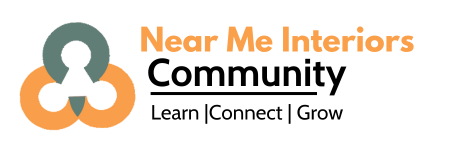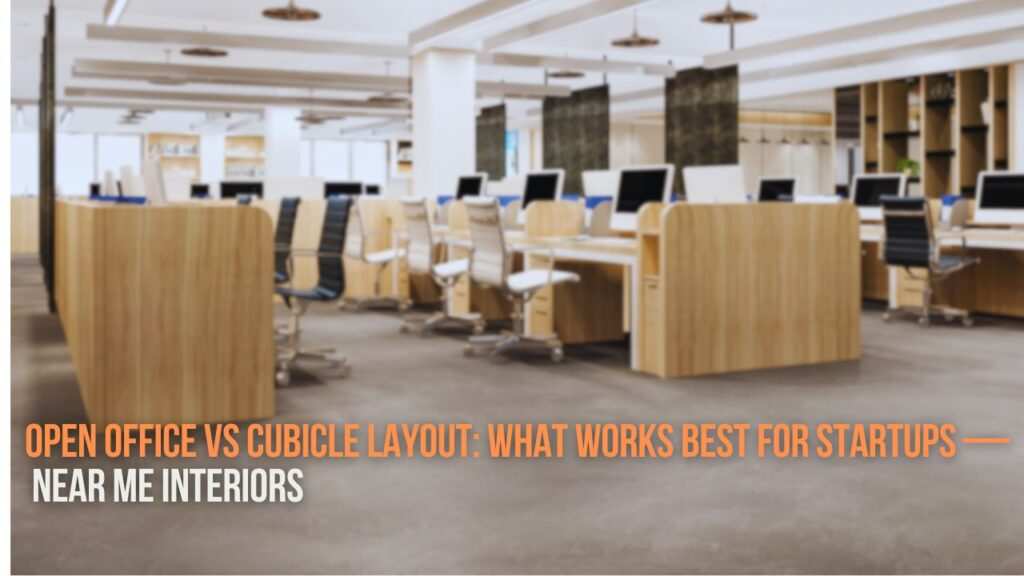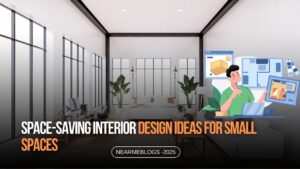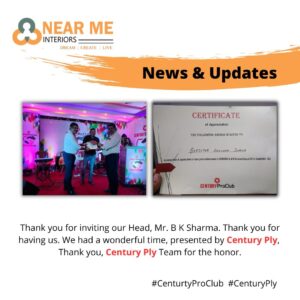In the heart of Kolkata’s tech and innovation belt—Sector V—startups are thriving. These growing companies are racing to build not just great products or services, but also great teams.
And at the foundation of that effort lies one critical question: How should a startup design its workspace? Should it embrace the openness and energy of a modern open-plan layout or stick to the structured, private comfort of cubicles?
The workspace is more than just a physical setting—it’s a reflection of your startup’s culture, values, and ambitions. A well-designed office can enhance productivity, collaboration, and morale, while a poorly thought-out one can hinder growth.
Discover the pros, cons, and key considerations of open office and cubicle layouts to help you decide what’s best for your startup in Sector V.
Understanding the Startups of Sector V: Unique Needs, Unique Challenges
Sector V is a magnet for startups in tech, SaaS, fintech, digital marketing, and more. These companies are typically lean, agile, and fast-moving. However, they also face constraints—limited budgets, dynamic teams, and a constant need to pivot.
Some of the most pressing workspace needs for these startups include:
- Flexibility: Teams expand and contract quickly.
- Collaboration: Fast problem-solving and innovation demand cross-functional dialogue.
- Focus: Product development and tech roles require deep concentration.
- Scalability: As the business grows, so must the space.
Open Office Layout: Openness, Energy, and Agility
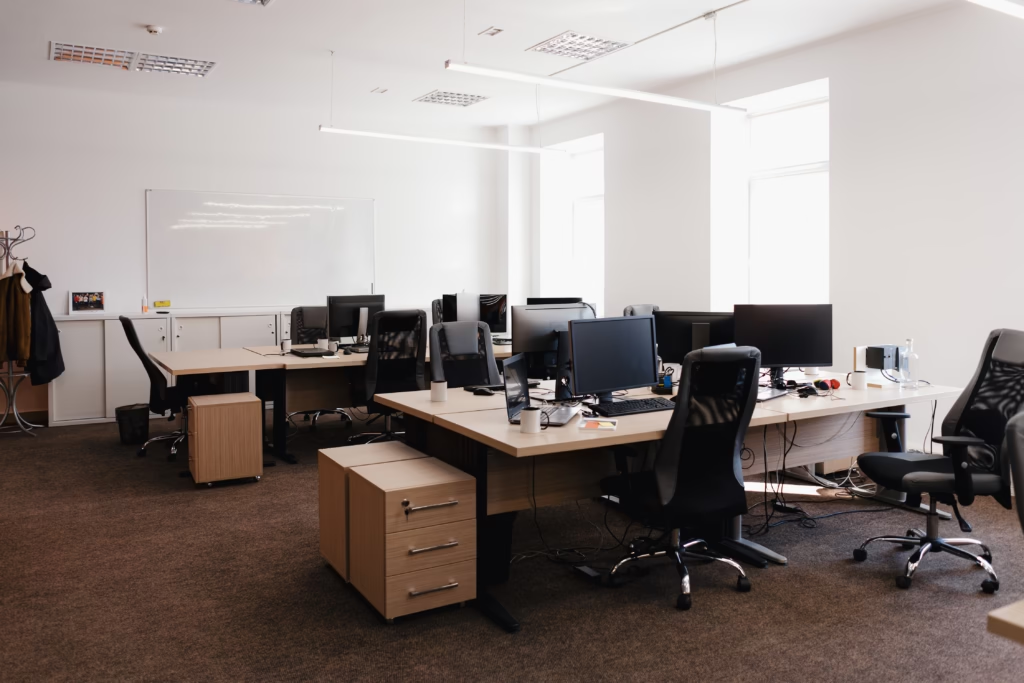
Image Credit: Freepik
What Is It?
An open office layout removes physical barriers—no enclosed cubicles or private offices. Instead, it features shared desks, communal zones, and minimal partitions.
Benefits for Startups:
- Encourages Spontaneous Collaboration:
Team members can brainstorm freely, exchange ideas on the fly, and build camaraderie through proximity. - Cost-Effective Setup:
Open spaces require fewer construction materials and are easier to set up and rearrange, which is ideal for budget-conscious startups. - Flexible and Scalable:
Rearranging desks or creating new zones is simple and quick—perfect for growing or restructuring teams. - Boosts Transparency and Flat Culture:
With everyone in the same space, communication becomes fluid, and hierarchy flattens—fostering a startup-like atmosphere.
Challenges:
- Distractions and Noise:
Background chatter, phone calls, and movements can make it hard to focus, especially for coders, writers, or analysts. - Lack of Privacy:
Sensitive conversations or confidential work can become awkward in a completely open setting. - Health and Hygiene Risks:
Shared air and surfaces can spread illnesses faster—especially during flu season or post-pandemic times. - Can Lead to Burnout:
Constant exposure to activity and noise may cause mental fatigue or overwhelm for introverted team members.
Cubicle Layout: Focused, Personal, and Structured
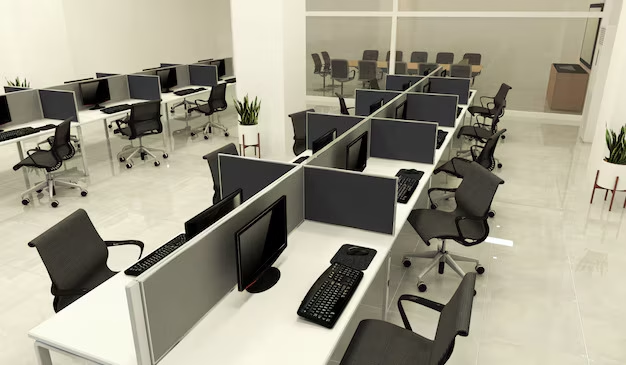
Image Credit: Freepik
What Is It?
Cubicle workspaces are semi-private sections partitioned by walls or panels, giving each employee a defined personal area within a larger office.
Benefits for Startups:
- More Focus, Less Noise:
The partitions act as sound buffers, allowing team members to dive deep into their work without frequent interruptions. - Personalization:
Employees can make their space their own—adding photos, notes, and accessories that boost morale and productivity. - Enhanced Privacy and Confidentiality:
Ideal for roles that require discretion—HR, finance, client support, etc. - Health-Conscious Design:
Cubicles create physical separation, reducing transmission risks and making sanitization easier.
Challenges:
- Reduced Interaction:
The visual and physical barriers can make spontaneous teamwork less frequent. - Can Feel Monotonous:
If not designed thoughtfully, rows of cubicles can appear bland and uninspiring. - Consumes More Floor Area:
Cubicles are less space-efficient and may not suit small offices. - Higher Initial Investment:
Installing cubicles requires more infrastructure, which can raise setup costs.
The Best of Both Worlds: Hybrid & Activity-Based Layouts

Image Credit: Freepik
Forward-thinking startups are embracing hybrid workspace strategies that combine open zones for collaboration with enclosed cubicles or private pods for focus work.
Popular Elements of a Hybrid Layout:
- Collaboration Hubs: Open spaces with whiteboards, couches, and team tables.
- Focus Zones: Enclosed or semi-private desks for coding, writing, and deep work.
- Hot Desking & Shared Desks: Encouraging flexibility without assigning permanent spots.
- Phone Booths & Meeting Pods: Small, soundproof spaces for calls or 1:1 meetings.
- Quiet Corners: Lounge-style quiet zones with soft seating and minimal noise.
This flexible design approach empowers employees to choose their environment based on the task at hand—boosting satisfaction and productivity.
Designing for Culture, Not Just Function
Workspace design sends a message. For startups especially, that message shapes how talent is attracted, retained, and engaged.
- Open layouts shout creativity, speed, and collaboration.
- Cubicles signal focus, structure, and discipline.
- Hybrid setups embrace diversity, personalization, and agility.
Founders should align their office design with their core values:
- If your team thrives on brainstorming, go open.
- If your product requires deep focus, lean cubicle.
- If you’re building a complex team with different working styles—choose hybrid.
Making the Right Choice for Your Sector V Startup
Ask Yourself:
- Is your team remote-first, hybrid, or in-office?
- Are most roles creative, technical, or operational?
- Does your startup need to impress clients or investors in person?
- What’s your growth plan—will you double your team in the next 12 months?
There’s no one-size-fits-all answer. But the best offices are:
- Intentional in design,
- Flexible in use,
- Empowering for every personality type.
Quick Comparison Table
| Feature | Open Office | Cubicle Layout |
|---|---|---|
| Best For | Creative teams, fast collaboration | Focused tasks, private work |
| Cost | Low setup cost | Higher setup cost |
| Privacy | Low | High |
| Noise | High | Low |
| Flexibility | High | Moderate |
| Scalability | Easy | Needs planning |
Sector V Real Estate Tip
Startups in Sector V can benefit from modular office spaces or coworking providers that offer hybrid options, allowing them to test what works best before committing. Whether it’s a compact unit in a tech park or a floor in a commercial tower, customizing your layout from the start can lead to better long-term outcomes.
Conclusion: Designing Workspaces that Drive Startup Success
Choosing between an open office and cubicle layout is more than a design decision—it’s a strategic one. It impacts how your team works, communicates, and grows.
Startups in Sector V must weigh flexibility, collaboration, privacy, and scalability. For some, an open layout unlocks synergy; for others, cubicles safeguard focus. And for many, a smart blend of both is the winning formula.
Whether you lean towards open collaboration or focused privacy, Near Me Interiors, the trusted office interior designers in Kolkata, helps startups in Sector V craft spaces that align with their vision and accelerate growth.
